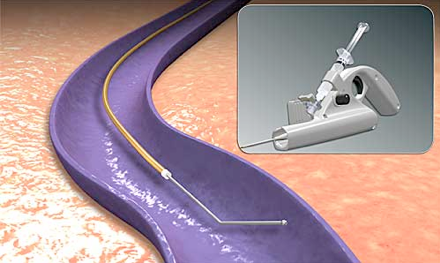Vein Practice


varicose veins

Varicose veins is a common conditions that affects approximately 30% of the adult population in the UK. Women are more commonly affected than men and there is often a family history of the disease. Although varicose veins are thought to predominantly affect older populations, a large number of women develop varicose veins during and after pregnancy or even earlier.
In most patients with varicose vein disease, there is a failure of the superficial veins of the leg. Valves, which allow one-way flow of blood from the legs to the heart, become incompetent thereby allowing blood to flow downwards as well. This leads to blood pooling and enlargement of the veins, giving the typical ’snake like’ appearance of varicose veins.

SYMPTOMS
Although most patients seek treatment for cosmetic problems, varicose veins can also cause swelling of the ankle, aching and pain in the affected leg. These symptoms are typically more noticeable after long periods of standing and towards the end of the day. In severe cases, the increased pressure in the veins can lead to chronic venous insufficiency. This is usually seen with changes in the skin appearance - dry/flaky skin, skin pigmentation and occasionally loss of fatty tissue around the ankle. In severe cases, bleeding, thrombophlebitis or skin ulceration can occur.


This animation explains in detail what varicose veins are, their causes, symptoms and the various treatment options.
TREATMENT
All patients benefit from exercise and elevation of the legs when at rest. Additionally, some patients may need to lose weight. There are a number of treatment options available for varicose veins. Compression hosiery can be used to assist the body’s muscle pump in the legs thereby forcing blood to flow in one direction up the leg. Current surgical treatment is largely minimally invasive and consists of endovenous laser ablation (EVLA) or radiofrequency ablation (VNUS), microphlebectomies and injection sclerotherapy.
Endovenous laser ablation (EVLA) – Under ultrasound guidance, a laser fibre is passed into the diseased vein. Once in the correct position, the laser is used to heat up the vein, causing it to close. The laser is pulled back along the length of the vein, ensuring that the whole vein closes permanently. The procedure can be performed under local anaesthetic and takes about one hour. You will be encouraged to walk immediately and will go home on the same day.


EVLA - This video shows the laser fibre sealing the vein as it is pulled back.
VNUS closure – Under ultrasound guidance, a catheter is passed into the diseased vein. A radiofrequency current passes between two electrodes at the end of the catheter and the heat generated causes the vein to close up permanently. The procedure is performed under local anaesthetic and most patients report no pain. There can be some temporary tenderness and numbness but most patients return to normal activity within one day. You will be discharged the same day.


VNUS - This video shows the VNUS catheter sealing the vein.
Phlebectomies – Whilst EVLA or VNUS procedures treat the underlying veins, the bulging veins, known as varices, will need to be removed. Tiny cuts, which do not require stitches, are made on the skin and the varices can be pulled out. This is normally performed under local anaesthetic.
Liquid/Foam sclerotherapy – This can be used to treat all problematic veins but is commonly used to treat small varicose veins or thread veins. It involves injecting a chemical directly into the vein. The chemical causes damage to the vein, making it swell, harden and eventually close. Not all veins are suitable for this procedure, this will be determined at the time of consultation.
OTHER PROCEDURES
ClariVein is a procedure which is catheter based similar to EVLA and VNUS. However, unlike these procedures it does not use heat therapy to close the vein. Instead, it uses a rotating end to damage the inside of the vein before sclerotherapy fluid fills the vein thereby closing it permanently.



ClariVein - An image showing the rotating end of the catheter inside the vein.
Steam vein scleroris (SVS) – This is a new method in which heat generated from steam is used to close the vein. Early results from studies have shown that the long term results are not as good as established therapies such as EVLA or VNUS. Further studies are ongoing currently.
